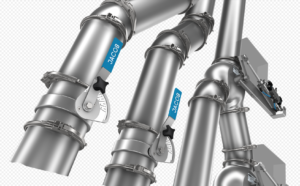In the third and final part of this article, we are going to discuss calculating total static pressure of the dust collection system.
Total Static Pressure
Each capture point, transition, branch and elbow in the ductwork will resist the flow of air. Each of these points will have an air resistance coefficient based on their geometry. Using the resistance coefficient for each point and the transport velocity, the total static pressure of the dust collection system can be determined.  Total static pressure is one of two key inputs for determining the appropriate size of the fan for the dust collection system. Underestimating the total static pressure results in under sizing the fan, which in turn results in lower than desired capture velocity.
Total static pressure is one of two key inputs for determining the appropriate size of the fan for the dust collection system. Underestimating the total static pressure results in under sizing the fan, which in turn results in lower than desired capture velocity.
Conclusion
We are glad that you have followed us through this three-part article. From our experience, we know that not correctly determining any one of these design criteria that we have discussed will significantly impact the performance of a dust collection system. If the task of getting all of the design criteria right for a dust collection system seems overwhelming, let us help. We will guaranty the performance of our dust collection system design, including calculating total static pressure, and that it will meet your dust control plan requirements. If it is a turn key project that you need, Eldridge has worked on several projects to develop a comprehensive DHA, design a dust collection system and select the right equipment.
